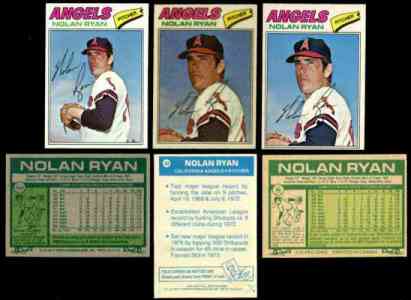1970 Topps #657 Padres TEAM card SCARCE HIGH # (Padres)


Please wander around the website for more info, prices, values & images
on vintage baseball, football, basketball, hockey, sport and non-sports cards.
Autographed 1961 Topps Baseball Cards |

1971 Kellogg's1971, Kellogg's second and by far scarcest and most valuable set, contained 75 different players on 2 ¼” by 3 ½” cards. The cards were plastic coated giving them a 3-D look !!! The plastic coating also made high grade cards nearly impossible find. Over time and the elements, most cards would curl making light and heavy cracks very common.As opposed to Kellogg's other issues which were available from the company as complete sets, 1971 Kellogg's cards were ONLY available one in each specially marked box of Kellogg's cereal. The only way to complete your 1971 Kellogg's set was to pester mom to buy, buy, buy more boxes of cereal.
In addition to the 75 different players, numerous scarcer variations exist
with minor differences in the stats on back. In addition, all 75 cards and
some variations are found with 2 different forms of copyright on the back: The "toughest" cards appear to be: # 7 Alou (1970 Oakland NL) # 28 Wright (Angles Crest Logo) # 54 Johnson (Angles Crest Logo) # 64 Fregosi (Angles Crest Logo) # 70 Osteen (No Number on back) # 2 Seaver (ERA 2.81) # 41 Gaston (113 Runs) # 65 Rose (RBI 485) |

1977 Topps Cloth Stickers |

The first important and mainstream basketball set was issued by Bowman in 1948. Other than a Topps set in 1957-58 and a 1961-62 Fleer set, there were no mainstream basketball sets issued until Topps started producing yearly sets beginning with their 1969-70 set featuring the rookie card of Kareem Abdul-Jabbar, who then went under the name of Lew Alcindor.
In hockey, there were a few sets issued in the 1910's and while O-Pee-Chee issued some sets in the 1930's, the real modern sets began in 1951 with the itroduction of Parkhurst's first set.
In racing, while cards go back as far as the early Indy car days of 1911, modern racing sets began in 1988 with the issues released by MAXX.


